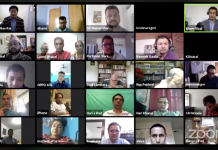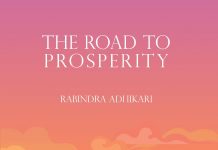The mind–body problem is the question of how the human mind and body can causally interact. This question arises when the mind and body are considered as distinct, based on the premise that the mind and the body are essentially dissimilar in nature. One of the earliest known formulations of mind–body dualism was expressed in the eastern Samkhya and Yoga of Vedic ideology (c. 650 BCE), which divided the world into Purusha and Prakriti. Specifically, the Yoga Sutra presents an exploratory technique to the nature of the mind.
The problem was addressed by René Descartes (1641) in the 17th century, resulting in Cartesian dualism, and by pre-Aristotelian philosophers, in Avicennian philosophy, and in previous Asian societies. A diversity of methodologies has been suggested. Most of them are either dualist or monist. Dualism maintains an inelastic dissimilarities between the realms of mind and matter. Monism maintains that there is only one combining genuineness, constituent or spirit in terms of which everything can be clarified.
Numerous philosophical viewpoints have been established which throw away the mind–body contradiction. The historical materialism of Karl Marx and subsequent writers, itself a form of physicalism, held that consciousness was engendered by the material contingencies of one’s environment. A clear refusal of the contradiction is found in French structuralism, and is a situation that normally considered post-war French philosophy.
In the western philosophical tradition there are numerous philosophers since ancient time to modern those discussed to solve the contrast of dualism. Plato, Aristotle, René Descartes, Immanuel Kant, Huxley, Whitehead, Popper and John Searle etc., are contributors to the western mind body problem.
Such a dualistic contrast are also found in Vedic philosophical traditions since Vedic period and onwards. Here, I will try to examine mind-body concepts and relationship in Vedic philosophy, not as a problematic standpoint, but in informative prospective to raise interest to research in this field.
I want to strong note here that the substance Dualism is a collective feature of several Vedic Hindu faculties, including the Samkhya, Nyāya, Yoga and Dvaita Vedanta. In these faculties a vibrant alteration is drawn between matter and a non-material soul, which is eternal and undergoes Samsara, a series of death and rebirth.
The Nyāya philosophy argued that qualities such as cognition and desire are inborn qualities which are not controlled by anything solely material, and therefore by a process of abolition must belong to a non-material self, the Atman. Many of these philosophies see their spiritual goal as Moksha, liberation from the cycle of rebirth
The Vedas are considered to be source of whole knowledge of Vedic Nepalese traditions since ages as the Vedas are believed to be composed about 6000 BC to 1500 in the plains of Bharatbarsha or caves of Himalayan ranges by contemporary academics. But traditional Hindu community accepts as true that Vedas are immortal and composed by none, but realized and reveled by spiritually qualified self-realized Risis in Samadhi. Veda is ultimate, unlimited, immutable, absolute and immortal properties of Brahma wherein all seed of entire universe contains as a word – form that is known as Shabda Brahma in practical world.
Thus, the Samadhi is most qualified and highest position of Tapa, where a spiritually qualified Rise or other pinancing individual can accomplish favorite and required power for material or divine purpose. It is called Tapa. I don’t see any proper English synonyms of Tapa. It is told that Brahma, the creator of the universe, went to Tapa before starting creating the universe that he could achieve unlimited power to complete the creation of the universal properties including Human.
There are several instances in Rigveda. According to some hymns the body is the residence of Atma what is Brahma himself. The human body is created by five gross materials. Body शरीर, Mind मनस् and finally; the Atman आत्मा are Vedic construction of mind body relationship. Atman is bearer, owner as well as consumer of Body and Mind affairs without being affected worldly phenomenon related M&B. Vedic understanding about the body is very clear. The body means the physical appearance of human feature winch includes five sense organs and five motor organ.
Nasadaiya sutra clearly has mentioned that the body is responsible for bodily properties and the mind is the regulatory authority of a body when decision making process of actions. If there is no body, the decision about an action is not possible. According to Vedic philosophical traditions, the body is represented of animal conditions: food, sleep, fear and sex and the Mind make human distinct from the animal world. Notion ज्ञान is the property which makes human distinct from animals.
The Upanishads are also carrying the idealistic concept as they are carrier of monastic schools. “There are two birds on the tree of eternity. One wanted to test worldly pleasureand fell down body life and another remain on the tree. Bodily Atma started to be contaminated within a body with intervening of Maya and forgot the real position. But this dualism is totally different than the western mind-body problem. In Vedic philosophical properties, the Men are part of the material world, not a soul. Thus, there is not same union problem as western dualism facing.
Samkhya is body and Yoga philosophy is mind. Samkhya is the theoretical expression of Mind and Yoga philosophy is a practical union of Mind with the body. In my opinion, the western concept of Mind is related to intellectual properties, but the word “Mana” or मनस् has more properties of emotions. Yoga philosophy tried to Combine Mana and Mind as Chitta. The chitta is the vessel or the mixing pot where the body and mind get together to interact with pure प्रज्ञा. Chitta can’t be compared with Descartes’s dualism. In Descartes there is no final solution of the dualism but Yoga philosophy clearly achieves the goal of unity in Samadhi what is recognized as Moksha. Moksha is the common goal of almost all Vedic philosophies.
Yoga philosophy is also essentially dualist in nature, but concept of body and mind is different than western dualism. According to yoga the Manas is the directing power behind all actions. It possesses the capacity of attention, selection, etc.; it synthesizes the discrete manifold of the sensations. It can perceive, but cannot conceive, and constituted as Chitta and Chitta Vritii in the theoretical world.
More notes, the Vedic concept of the human body is equally material and spiritual. The Upanishad says that the body is manifestation several Gods and goddess. The body has a full replica of the universe, what is called Biswarupa (chhadogya and Srimad Bhagwatam 2/2) and mind is a bodily property which exposed several emotions. The Buddhi is the controller of body and Mind both. We should not confuse that the consciousness is the replica of the Soul or Purusha, which is never contaminated with bodily affairs.
Nyaya, Vaiseshika, Shankar Vedanta, Ramanuja Vedant also has domestic approaches, between those philosophies the mind is part of the bodily subject controlled by Buddha. In this respect, there is clear that the western concept of the mind body problem does not exist in the Vedic philosophical tradition. Hence, we can’t ignore the union or first causal problem of evolution in Samkhya philosophy as well.
Reference
1. Chandogya Upanishad, VII, 5-6.
2. Paingala Upanishad, II, 5-6.
3. Katha Upanishad, VI, 10.
5. Srimad Bhagavat Mahapuran 2/2
6. Srimad Bhagvat Gita 2/2, 10
7. J.P. Atreya, Mind and its Function in Indian Thought, p.64.
8. S. C. Vidyabhusana, Nyaya Darsana of Gotama, p. 270.
9. Swami S.P.Saraswati, Patanjali Raja Yoga, p.13.
10. S.N. Dasgupta, Yoga Philosophy in Relation to Other Systems of Indian Thought, p. 260.
11. S. Radhakrishnan, History of Philosophy, Eastern and Western, p. 264.
12. J.N. Sinha, History of Indian Philosophy, Vol.2, p. 290.
13. Paul Brunton, The Hidden Teaching Beyond Yoga, p.265.
14. Spinoza, Ethics, III, 2.
15. Gilbert Ryle, The Concept of Mind, p.23.
16. William James, Principles of Psychology, pp.220-40.
(Note: Paper presented at “science and Scientist 2017 at Nepal academy on August 18th 2017 by Dr. Govinda Upadhyaya.)
















